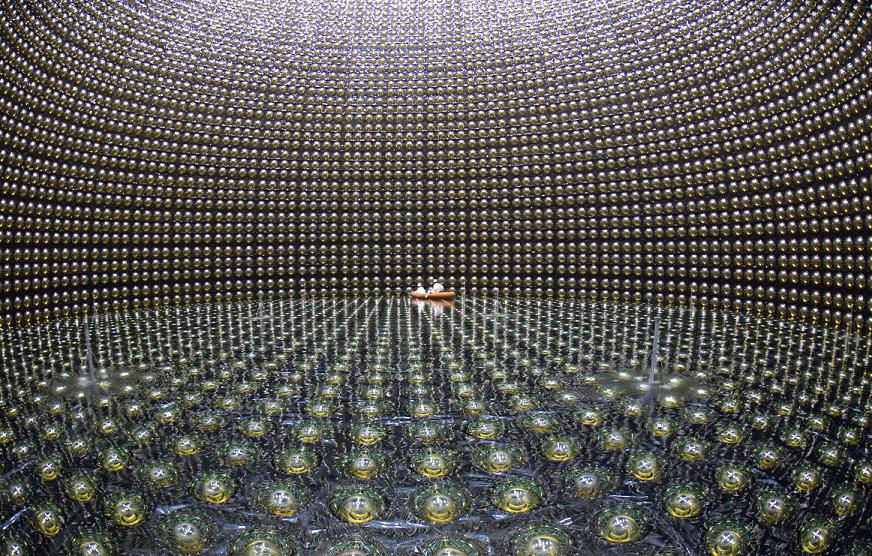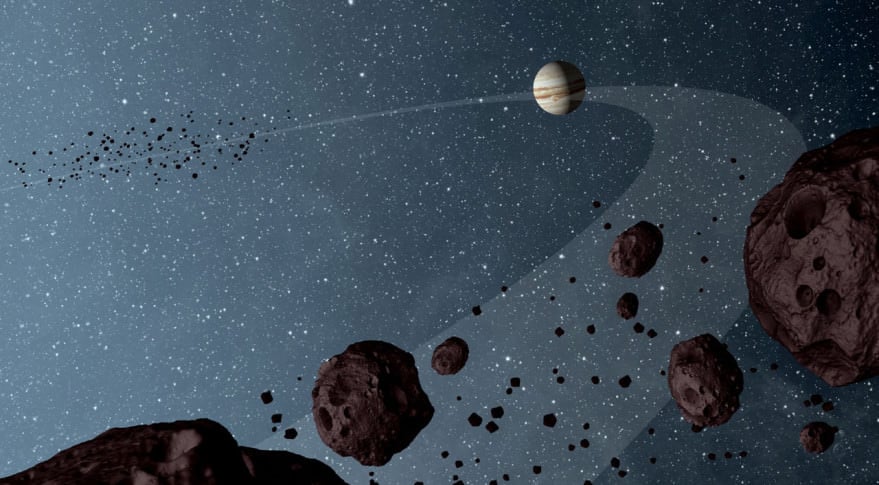
Continue reading

Jupiter's largest moons - aka. the Galilean Moons - could one day be colonized, providing humanity with limitless resources and incredible opportunities for research.
Continue reading

The slowdown in the rise of the global mean surface temperature between 1998 and 2013 wasn't a slowdown at all. The oceans have warmed instead.
Continue reading

You know what would be exciting? Finding life on Mars. What is the best evidence we've seen for life on the Red Planet?
Continue reading

Continue reading

Upon departing the ISS after a month-long stay, the Cygnus CRS OA-5 mission began conducting a controlled fire experiment... in space!
Continue reading

Located approximately 1,360 light years from Earth in the direction of the Vulpecula constellation, the Dumbbell Nebula is a beautiful thing to behold!
Continue reading

Continue reading

Continue reading

According to a recent speech given by Hawking at the Oxford Union, humanity has 1000 years to become interplanetary, or face extinction
Continue reading

Due to the lack of a magnetosphere and its very thin atmosphere, the surface of Mars is exposed to a lot more radiation than planet Earth.
Continue reading

Using data obtained by the Kepler mission, international team of astronomers have found the roundest object yet in the universe!
Continue reading

KENNEDY SPACE CENTER, FL - From both the technical and weather standpoint, the outlook is outstanding for Saturdays sunset blastoff of the NASA/NOAA GOES-R geostationary weather observation satellite that's set to deliver a 'quantum leap' in weather forecasting on Nov. 19.
Continue reading

Continue reading

Rock formations at the Gusev Crater on Mars closely resemble formations at El Tatio in Chile, which were partly formed by living processes.
Continue reading

In this epic, 2-part episode, we team up with Isaac Arthur to imagine how humans will colonize the inner Solar System, becoming a true spacefaring civilization.
Continue reading

This episode continues our team up with Fraser Cain to look at Colonizing the Solar System, we move from the inner solar system to the Asteroid Belt and beyond, all the way out to the Oort Cloud.
Continue reading

Continue reading

The idea of Moon mining has been around for decades, and is becoming more attractive thanks to the NewSpace industry and renewed lunar exploration
Continue reading

Dark matter? Who needs it?! Gravity may be something else altogether.
Continue reading

Continue reading

Almost a week after the election, NASA is still waiting to talk to Trump's transition team, making the future of the space agency seem uncertain
Continue reading

KENNEDY SPACE CENTER, FL - After an ironic detour due to Hurricane Matthew, liftoff of the game changing NASA/NOAA next generation GOES-R geostationary weather observation satellite offering a "dramatic leap in capability" is finally on track for this weekend on Nov. 19 from the Florida Space Coast.
Continue reading

Continue reading

The ASTRI telescope - a prototype for a new type of gamma-ray telescope located on Mount Etna, Siciliy - just passed its most important test to date
Continue reading

Sure, if you've got lots of energy, you can zip around the Solar System. But if you've got time and rocket fuel is in short supply, you can take the Interplanetary Superhighway.
Continue reading

The Leonid meteors are expected to peak on the night of Thursday, November 17th into the morning of Friday, November 18th.
Continue reading

First proposed in the early 20th century, and a staple of science fiction for over a century, the concept of the "death ray" is fast becoming a reality!
Continue reading

Space Habitat designs are enormous, high-tech structures. Carl Sagan had a different idea: comets as space habitats.
Continue reading

KENNEDY SPACE CENTER VISITOR COMPLEX, FL - America's pioneering astronauts who braved the perils of the unknown and put their lives on the line at the dawn of the space age atop mighty rockets that propelled our hopes and dreams into the new frontier of outer space and culminated with NASA's Apollo lunar landings, are being honored with the eye popping new 'Heroes and Legends' attraction at the Kennedy Space Center Visitor Complex (KSCVC) in Florida.
Continue reading

Continue reading

Researchers at the Super-Kamiokande Observatory hope to be able to learn more about the elusive neutrino particle, thanks to a new computer system that can monitor detections in real-time.
Continue reading

A new instrument that took five years to build allows astronomers to capture and analyze the light reflecting off distant exoplanets.
Continue reading

Continue reading

The controversial EM Drive has received a potential shot in the arm, thanks to a "leaked" report which claims it works in a vacuum.
Continue reading

An international team of researchers have found another planet orbiting a red dwarf; in this case, a small super-Earth less than 33 light years away.
Continue reading

Continue reading

Continue reading

Looking for a good binocular comet? Well, if luck is on our side, we should be getting our first looks at periodic Comet 45P/Honda-Mrkos-Pajdušáková as it tops +10th magnitude in dusk skies over the next few weeks.
Continue reading

With the election over, there are concerns over at NASA at how a Trump presidency might affect their research and exploration efforts
Continue reading

By now, you've heard the news. We'll spare you the "it's a bird, it's a plane..." routine to usher in the Supermoon 2016. This month's Full Moon is not only the closest for the year, but the nearest Full Moon for a 80 year plus span.
Continue reading

The center of large galaxies are active places, where supermassive black holes pump out an incredible amount of light and radiation!
Continue reading

Hoping to recover quickly after suffering a calamitous launch pad explosion of their Falcon 9 rocket at Cape Canaveral some two months ago, SpaceX is aiming to resume launches of the booster in mid-December, said company founder and CEO Elon Musk in a recent televised interview on Nov. 4.
Continue reading

Space exploration oddball Mars One has announced a merger with a Swiss mobile payment company called InFin AG.
Continue reading

Beyond the Milky Way Galaxy lies the Small and Large Magellanic Clouds, two bundles of stars and dust that orbit our galaxy at a distance of 160,000 and 200,000 light years.
Continue reading

Continue reading

In a complete change of plans from less than three weeks ago, NASA has asked Orbital ATK to switch rockets and launch the firms next Cygnus commercial cargo freighter to the space station on the tried and true Atlas V rather than their own Antares rocket - which just successfully delivered another Cygnus to the orbiting outpost with a hefty stash of science and supplies.
Continue reading

Located in the direction of the Scutum Constellation, about 5,000 light years from Earth, is the open star cluster known as Messier 26
Continue reading

The discovery of a millisecond pulsar orbiting a low-mass white dwarf star has astronomers puzzled, mainly because its orbit defies conventional models of stellar formation
Continue reading

Continue reading


















































